Painting furniture is a fun, easy way to update old pieces or give new life to something you found at a garage sale. If you’re not careful, paint can bleed through the layer of paint and ruin your hard work. Here are some tips for avoiding paint bleed-through and creating beautiful painted furniture!
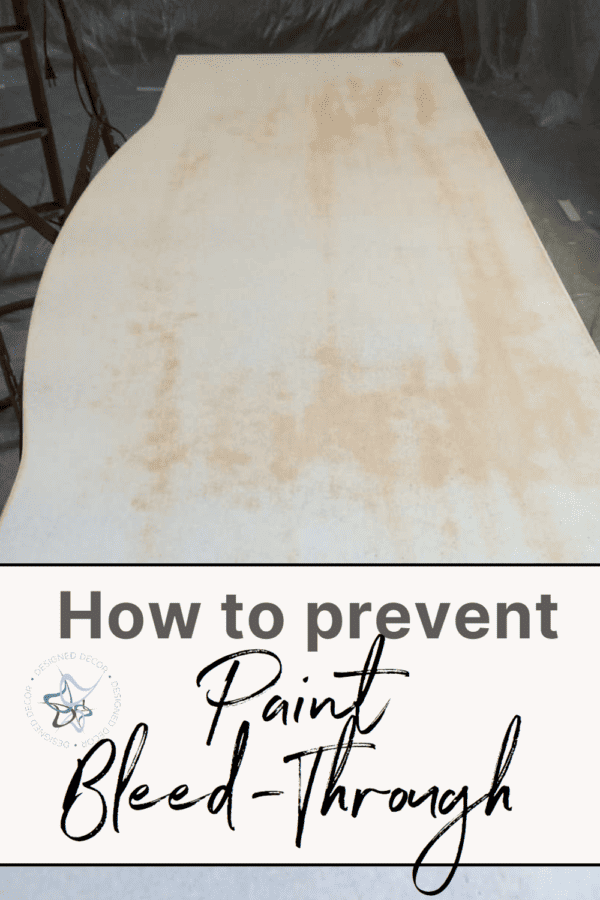
Maybe you have only painted a few pieces of furniture and have not experienced the dreaded paint bleeding. I guarantee the unsightly paint bleed-through will happen sooner or later in your furniture painting journey. Sometimes it is little yellow stains or brown stains and other times it is the entire piece. This step-by-step tutorial will give you all the tips, tricks, and best product to use before paint bleed-through happens and also how to deal with it when it does happen.
I have had my share of paint bleed-through so I am going to give you all my tips and tricks, on what products work, and the best way for dealing with bleed-through.
DeDe Designed Decor
What is Paint Bleed-Through
Paint Bleed-through on wood furniture is the wood tannins or wood stains coming through the paint layer. The tannins and stains are oil-based and most paints are water-based, and we all know that oil and water don’t mix.
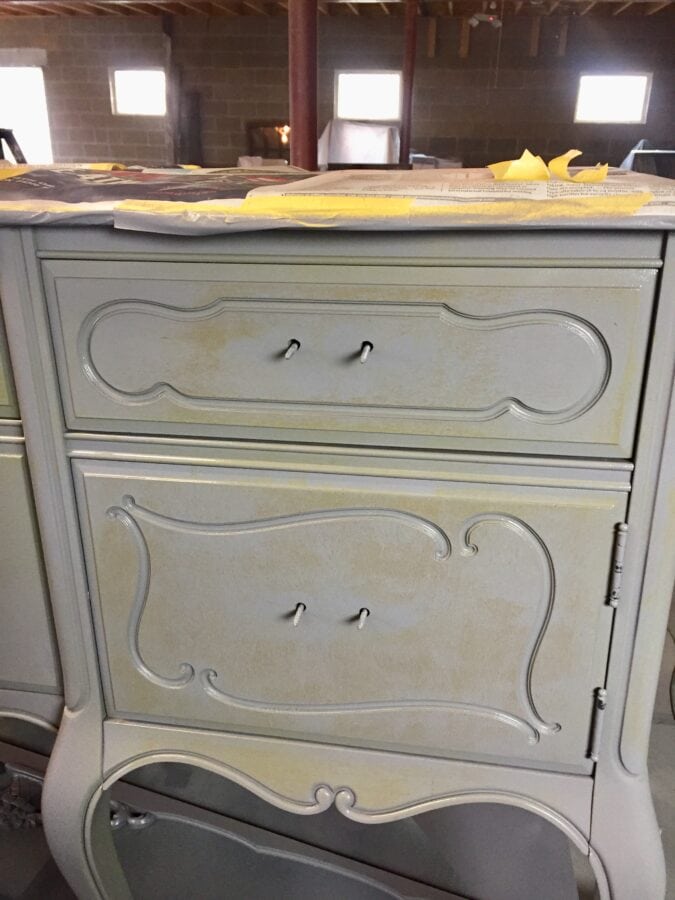
All those yellow stains in the photo above are paint bleed-through.
What causes paint to bleed through?
This is the tricky part because it can happen right away after the first coat of paint or after many coats of paint. It can also wait to show up until the top coat of the furniture sealer has been applied. If you are lucky and catch it after the first coat of paint, you can save yourself frustration and time by fixing the problem after the first coat.
I have had it happen to me on the final stage of sealing and it is truly MADDENING!
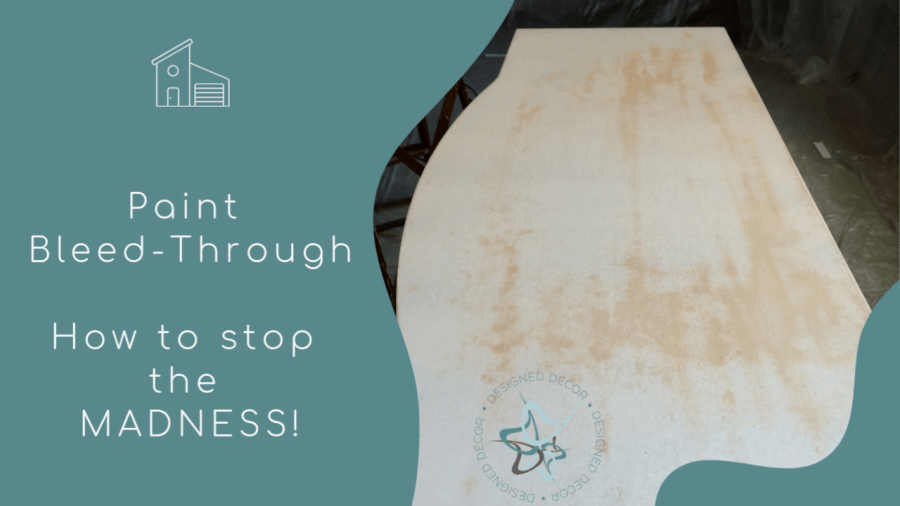
Signs of Bleed-Through
Dark wood like cherry or mahogany that has dark natural tannins tends to generate more bleed-through than lighter woods like pine or oak. Dark antique stained pieces that have lost their polyurethane coating have a higher tendency to bleed. Also, these same antique pieces may bleed in areas that have been sanded before painting.
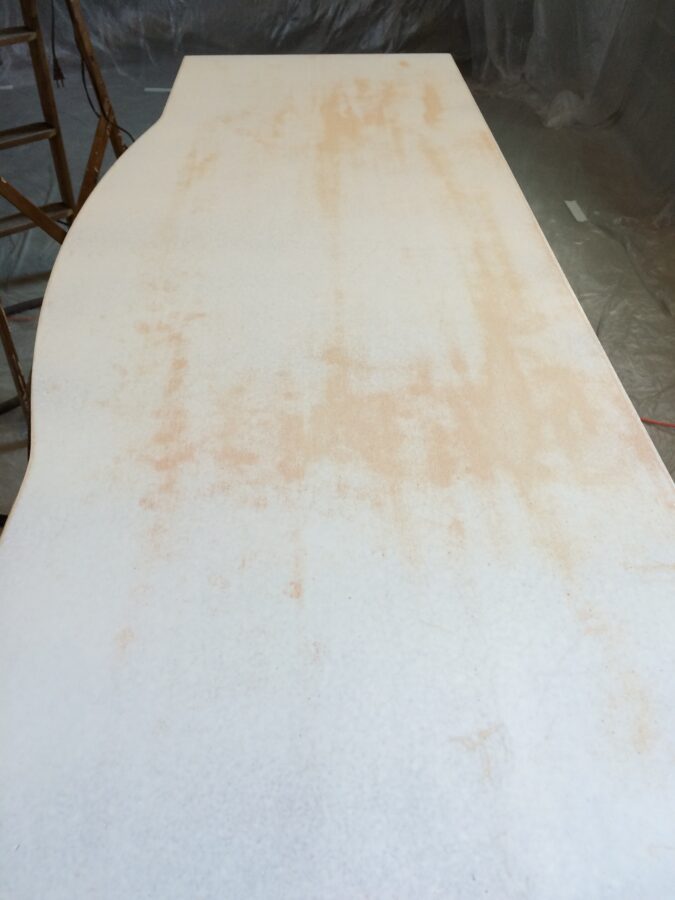
Designed Decor Videos
Fastest and Easiest Solution to prevent paint bleed-through
The fastest and easiest solution for dealing with bleed-through is painting your furniture makeover black or a very dark color. If you are fortunate enough and want a dark piece of furniture, paint it black and you don’t have to read any more of this post.
On rare occasions, dark-painted furniture can also have paint bleed through. I try to avoid sanding cherry and mahogany wood pieces down to the bare wood as this is the main reason for bleed-through. If ever you sand to bare wood with these dark woods, use a shellac-based primer before painting.
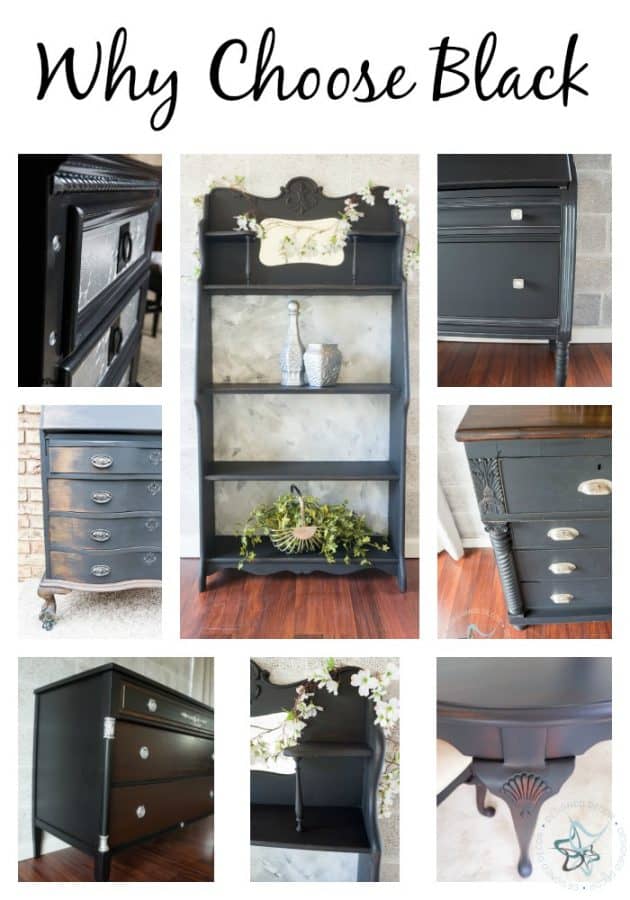
This post contains affiliate links. Click here to see my full disclosure policy.
For those who want to paint furniture white or a light color, here are more solutions for dealing with paint bleed-through.

How to Block Bleed-Through
Use an oil-based sealer once the furniture has been primed with a stain-blocking primer or an oil-based primer and painted. I prefer to use furniture wax as my oil-based sealer and shy away from an oil-based polyurethane. An oil-based polyurethane can yellow your furniture paint over time and since you are probably painting in a light color, you don’t want this color to be yellow. This is why I recommend a wax over an oil-based sealer.
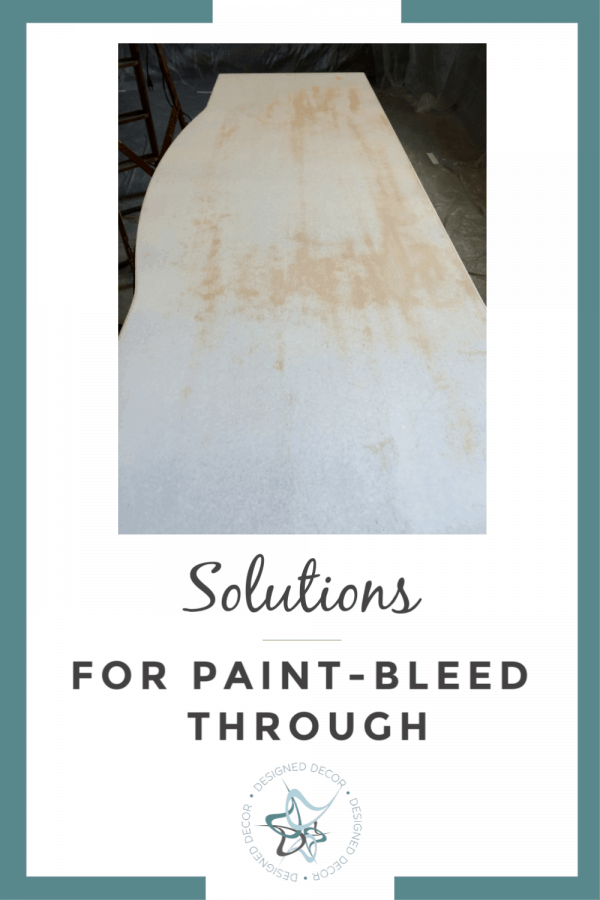
- Use a stain-blocking primer to start, especially when wanting to paint in light colors. There is a difference between oil-based products and water-based primers. Remember, bleed-through happens with wood tannins which are oil-based. This is why you need to use a coat of primer that is oil-based for stain blocking. Here is a list of the best primers and stain blockers.
Favorite products to get rid of bleed-through
Cover-Stain – I use this Zinnser bin primer to brush on or in the spray can version. The spray can version is more expensive however, I really prefer spraying on this primer as the clean-up is easier. I don’t like to use chemicals to clean up oil-based paints, so I choose to spray first. If you are hand painting on an oil-based primer, use cheap chip brushes and throw them away. These nylon chip brushes
give a smoother finish than the common natural chip brush
.
Clear Shellac Primer – is another great alternative for stain blocking and this one goes one step further with odor blocking. This is also great to use on drawers or furniture pieces that are really stinky. Just spray the drawers inside and out to seal away the smell. The key is to use the right primer for your furniture makeover.
Furniture waxes are very easy to use. Also using colored wax can alter the color of the paint for an aged look or a whitewashed finish, by using light waxes.
My favorite wax to use is Maison Blanche Antique Wax. Sadly it has been discontinued and I am now recommending to use antiquing wax. It comes in a variety of colors and it is one of the easier ones to use. The wax is 100% Natural and eco-friendly, it contains only beeswax and natural tree nut oils so it’s completely safe for the environment and for your health. It can even safely be used on children’s toys and furniture!
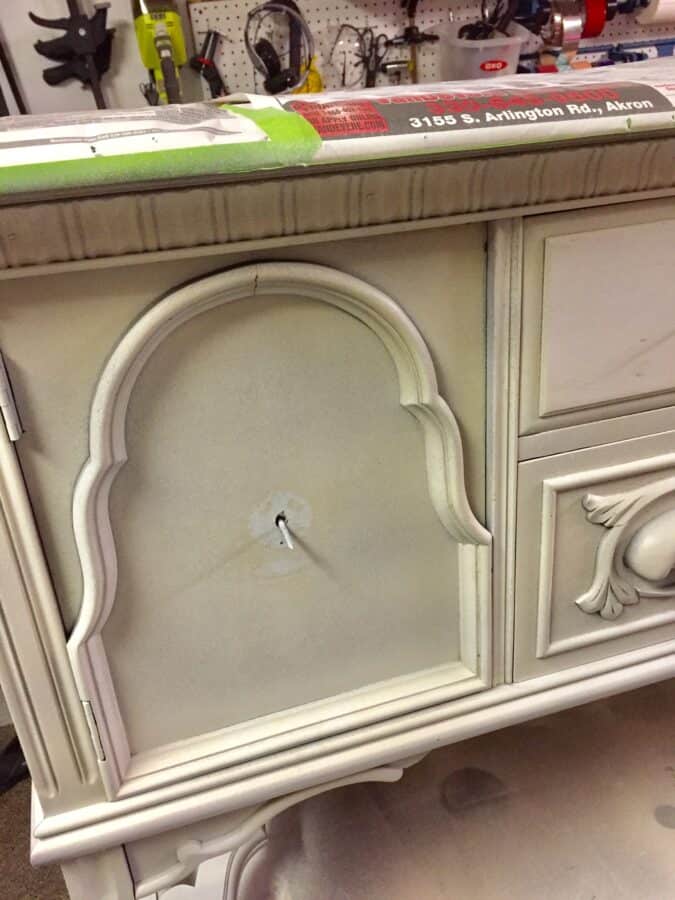
How to fix paint bleed-through
If you have already painted the furniture and discovered a reddish, yellow, or light brown discoloring, you need to fix the bleeding.
Here are my tips and thoughts on my process when dealing with paint bleed-through and painting furniture. This comes from many failed attempts at thinking I won’t have bleed-through.
If you notice the bleeding before you seal, spray the affected areas or the entire area with a stain-blocking primer as mentioned above. Make sure to have smooth surfaces on your coats of primer and reapply another coat of paint. If the bleeding has stopped, proceed with the sealer.
On a furniture piece that has a lot of bleeding, I will do the steps above and seal it with wax. Again, wax is an oil-based product and will help block the bleed from happening when sealing.
Final tips to paint bleed
When sanding a piece of furniture in order to get it ready for painting due to flaws or the original stained finish is very worn, I paint it a dark color. If I really want a light color on the furniture, I “cut to the chase” and prime it automatically with coats of primer. Once the painting is finished, I begin to seal the furniture with my favorite sealer, General Finishes High-Performance in matte, If I see a small spot of bleed-through, I continue to seal, but if I see a large section of bleed-through, I stop and let the sealer dry and go to plan B.
Plan B is to re-prime the bleed-through areas, paint again, and seal with wax. This usually blocks the bleed-through.
I typically like to spray on my paints and sealers and use the glaze for the aging and shading. I use waxes for small easy home decor projects or for the pieces that have bleed-through.
Have you ever had paint bleed-through? If so, what solutions did you take? Leave me your comments below as I always love to hear how others work on painted furniture pieces.
If you need more help with your furniture painting make sure to read my
insider furniture painting tips & tricks as well as my step-by-step online furniture painting workshops
We have tackled some fun, easy, and difficult DIY projects to make our house a home. Check out these DIY projects for more inspiration.
- Upholstered Wood Dining Chairs
- Jigsaw Puzzle Table
- How I spray-painted orange blinds
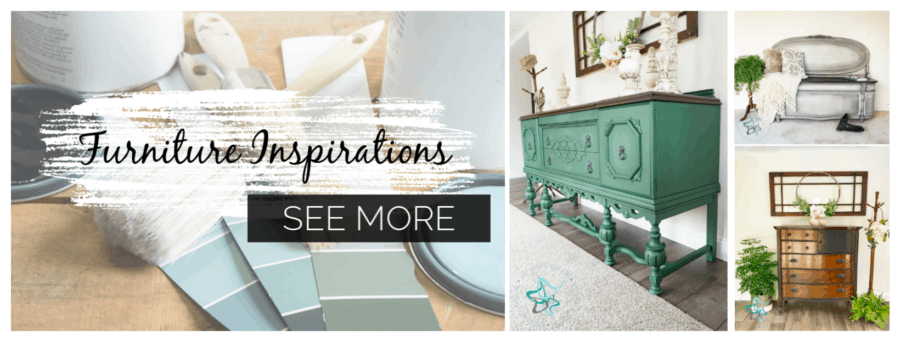
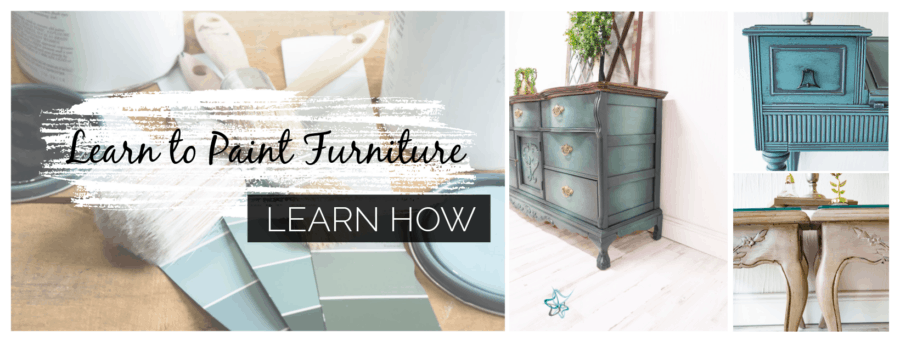

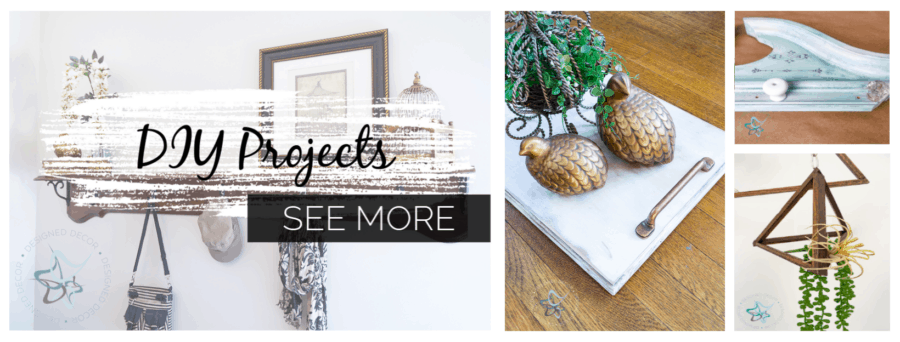


Join the DD Community!

Join the Designed Decor Community and receive weekly free tips on DIY home projects, painted furniture, decorating, and much more.

Alina Simmons says
Great information and you are a great informer. i love your post, you are doing a great job dear. Thanks for the share.
Teddee Grace says
Interesting information, but could have done without the references to menstrual blood accidents!
Cecilia from Georgia says
De De, this post hit my in box just when I needed it! I’m fighting bleed through with a china cabinet and the cabinet is winning. I did use a water based Kilz so I learned from you to stop using water based primers. Good to know! I have shellac so I want to use that. Now what I need to know, is after I use the shellac, do I need to paint a test spot over the shellac to see if bleeding is sealed? Or can I get to work with my painting? Thanks for the information!
Designed Decor says
Most times you should be good to go once you sealed with an oil-based primer. If you know a certain spot that had bleed through you can test it, but sometimes it is not fail-proof. So pieces can be very stubborn even when using shellac.
susan says
I’ve had several pieces that bleed through in spots even after sealing ???? Now I just go ahead and seal with shellac or the shellac based primer on any older pieces BUT it still happens! My question is on plan B you prime over the area again then wax over the primer then paint over the wax? Have you had problems with the paint adhering without sanding? Should any wax that I use work? I just finished a dresser that bled through where I had distressed the edges as soon as I applied the sealer. I had to seal again and paint those areas twice ???? and then not distress at all. I use a product called Polyvine Wax Finish Varnish, which I have used for years with no problems. Thanks for any input!
Designed Decor says
Hi Susan, Once you prime over the area again, go ahead and paint and once done painting use the wax sealer, the wax sealer is last. Yes, distressing can cause bleed through since you are exposing the wood and giving it a chance to come back to the top since you exposed the wood and removed the stain-blocking primer. It is so frustrating dealing with it as even the best protection does not guarantee to work.